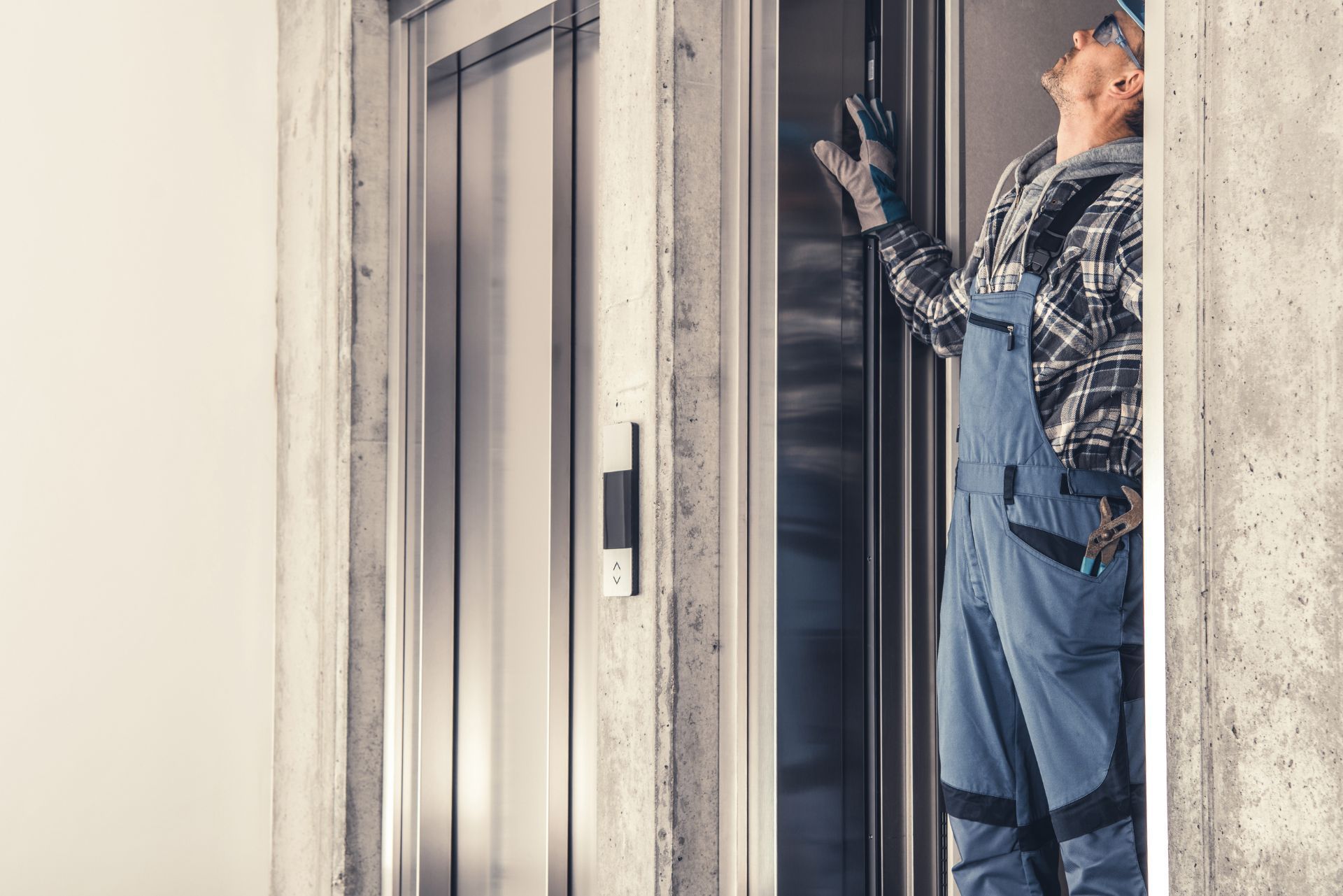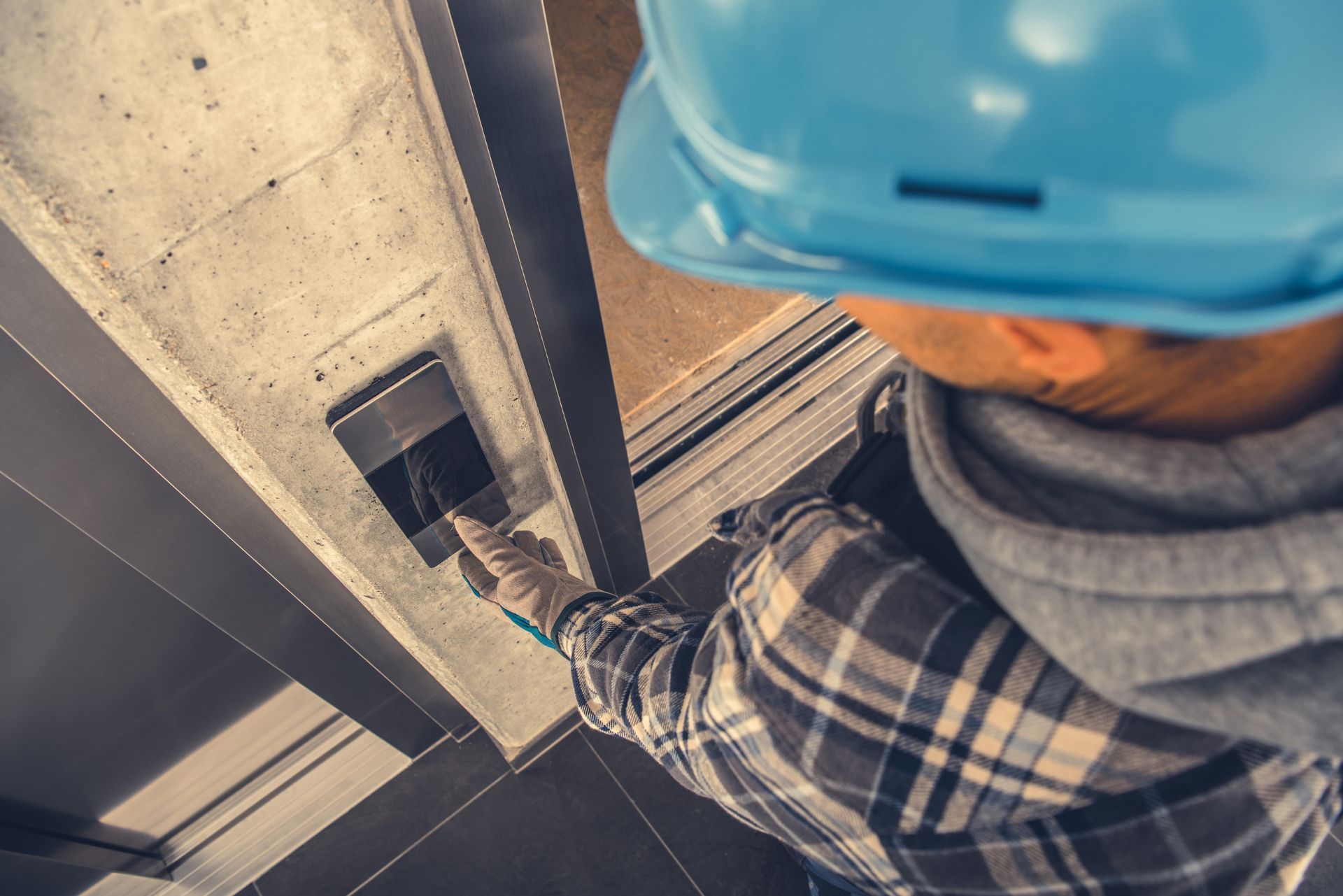Index
Understanding the Risks Faced by Elevator Electricians
Types of Insurance Coverage for Elevator Electricians
Industry Trends Impacting Elevator Electrician Insurance
Financial and Operational Considerations for Elevator Electricians
Choosing the Right Insurance Provider and Policy
Conclusion: The Vital Role of Insurance for Elevator Electricians
Contact Us
Phone
Location
Simi Valley, CA 93065
The Woodlands, TX 77382
Katy, TX 77494
Elevator electricians play a crucial role in the construction, maintenance, and repair of elevators, ensuring safe and reliable vertical transportation in buildings worldwide. However, this profession comes with significant risks, from electrical hazards to falls, making insurance not just a formality but a necessity. Understanding elevator electrician insurance is vital for professionals and businesses alike to protect against financial losses and ensure compliance with safety regulations.
With elevator-related fatalities accounting for approximately 0.5% of all workplace deaths annually in the United States, the importance of comprehensive
insurance coverage cannot be overstated. This article delves into the key aspects of elevator electrician insurance, including the risks involved, types of coverage needed, and recent industry trends shaping insurance requirements. For those in the elevator installation and repair field, staying informed is a critical step toward safeguarding their livelihood and well-being. For more detailed statistics on elevator safety and industry growth, visit
WifiTalents elevator death statistics.
Understanding the Risks Faced by Elevator Electricians
Elevator electricians encounter a variety of hazards on the job that elevate their risk profile compared to many other professions. According to experts from Evolution Insurance Brokers, "Elevator installers and repairers suffered the highest numbers of deaths in work on or near elevators, far above laborers, supervisors, ironworkers, and other professions." This highlights the dangerous nature of the work, which often involves working in confined spaces, at heights, and with complex electrical systems.
Common injuries include falls, burns from electrical shocks, and muscle strains from lifting heavy equipment. The U.S. Bureau of Labor Statistics notes that these injuries are prevalent due to the physical demands and technical challenges of elevator installation and repair. Such risks make specialized insurance coverage essential to protect electricians from the financial consequences of accidents or liability claims.
Moreover, elevator breakdowns can cause significant delays in urban skyscrapers, with average wait times reaching up to 10 minutes during peak hours. This not only affects building occupants but can also increase pressure on maintenance teams to perform quick and safe repairs, sometimes under stressful conditions. Understanding these risks helps clarify why tailored insurance policies are necessary for elevator electricians.
In addition to the immediate physical dangers, elevator electricians must also navigate the complexities of safety regulations and compliance standards. The Occupational Safety and Health Administration (OSHA) has specific guidelines that govern the installation and maintenance of elevators, which electricians must adhere to in order to minimize risks. Failure to comply with these regulations can lead to not only serious injuries but also hefty fines for companies. This regulatory environment adds another layer of responsibility to the electrician's role, requiring them to stay informed about changes in safety standards and best practices.
Furthermore, the technological advancements in elevator systems have introduced new challenges for electricians. Modern elevators often incorporate sophisticated computer systems and smart technology, which require electricians to possess a diverse skill set that includes both electrical and software knowledge. As these systems become more intricate, the potential for errors increases, which can lead to dangerous situations if not handled correctly. Continuous education and training are essential for electricians to keep pace with these developments, ensuring they can safely manage the complexities of contemporary elevator systems while minimizing risks on the job.

Types of Insurance Coverage for Elevator Electricians
Given the unique hazards of elevator installation and repair, elevator electricians require a range of insurance coverages to address different aspects of risk. The most common types of insurance include:
- General Liability Insurance: Covers third-party bodily injury or property damage claims that may arise from work activities.
- Workers’ Compensation Insurance: Provides benefits to employees injured on the job, covering medical expenses and lost wages.
- Professional Liability Insurance: Protects against claims of negligence or errors in the design, installation, or maintenance of elevator systems.
- Commercial Auto Insurance: Necessary if vehicles are used to transport equipment or personnel to job sites.
- Equipment and Tools Insurance: Covers repair or replacement costs for specialized tools and equipment used in elevator work.
Choosing the right combination of coverages depends on the size of the business, the scope of work, and local regulatory requirements. For elevator electricians working in high-rise buildings or large commercial projects, additional coverage such as umbrella insurance may also be advisable to extend liability limits. Furthermore, as technology advances, elevator electricians may find themselves working with increasingly sophisticated systems, necessitating a reevaluation of their insurance needs to ensure comprehensive protection against emerging risks.
In addition to the standard coverages, elevator electricians should consider specialized policies that address specific risks associated with their work. For instance, cyber liability insurance is becoming increasingly relevant as elevators are integrated with smart technology and IoT devices. This coverage can protect against data breaches and cyberattacks that could compromise elevator safety systems or customer data. As the industry evolves, staying informed about such developments is crucial for maintaining adequate coverage.
Importance of Compliance and Insurance Mandates
Insurance requirements for elevator electricians are often influenced by building codes, safety regulations, and lender mandates. A 2023 study of 120 US skyscrapers revealed that 78% upgraded their elevator backup systems during refinancing cycles to comply with lender-mandated insurance requirements. This trend underscores how insurance and safety standards are increasingly intertwined in the elevator industry.
Ensuring compliance with these mandates not only protects the electrician and their employer but also helps maintain the operational integrity of elevators in critical infrastructure. Businesses that fail to meet insurance and safety standards risk penalties, project delays, and reputational damage. Moreover, with the increasing emphasis on safety and risk management, many clients are now requiring proof of insurance before awarding contracts, making it imperative for elevator electricians to have their documentation in order.
For those interested in the evolving market dynamics and insurance implications, Pmarket Research provides insightful analysis on elevator emergency power systems and related insurance trends, accessible at
Pmarket Research elevator emergency power market. This resource can be invaluable for electricians looking to stay ahead in a competitive landscape, as it offers data-driven insights that can inform strategic business decisions and insurance planning.
Industry Trends Impacting Elevator Electrician Insurance
The elevator and escalator market is experiencing steady growth, with projections indicating a compound annual growth rate (CAGR) of 7% through 2030. This expansion is driven by urbanization, new construction, and modernization of existing buildings worldwide. As the market grows, so does the emphasis on safety standards and insurance coverage to mitigate risks associated with increased elevator usage.
One notable trend is the rise in elevator safety inspections globally, which have increased by 30% over the last five years. This surge reflects heightened regulatory scrutiny and a focus on preventing accidents before they occur. For elevator electricians, this means more frequent inspections and maintenance work, which can increase exposure to occupational hazards but also underscores the need for robust insurance protection.
In addition to safety inspections, advancements in technology are reshaping the elevator industry. The integration of smart technology into elevator systems is becoming increasingly common, allowing for real-time monitoring and predictive maintenance. This not only enhances safety but also improves efficiency, reducing downtime and operational costs. However, the implementation of these technologies requires specialized training and knowledge, which can pose additional risks for electricians who must adapt to new systems. Consequently, insurance policies may need to evolve to cover the unique liabilities associated with these technological advancements.
Moreover, the growing emphasis on sustainability is influencing elevator design and operation. Many companies are now focusing on energy-efficient elevators that reduce power consumption and carbon footprints. This shift not only aligns with global sustainability goals but also introduces new regulatory requirements that electricians must navigate. As businesses in the elevator industry adapt to these environmental standards, they must ensure their insurance coverage reflects the potential liabilities and risks associated with green technologies.
Businesses in the elevator industry must stay abreast of these developments to ensure their insurance policies remain adequate and compliant. The growing market and evolving safety landscape make it essential to regularly review and update insurance coverage.
More detailed elevator industry statistics can be found at
WifiTalents elevator industry statistics.
Financial and Operational Considerations for Elevator Electricians
Elevator and escalator installers and repairers held about 24,400 jobs in 2023, according to the U.S. Bureau of Labor Statistics. This workforce size highlights the significant demand for skilled professionals in this niche but essential trade. However, with the physical and technical challenges involved, the financial risks of workplace injuries or equipment damage can be substantial.
Insurance not only protects workers and businesses from the direct costs of accidents but also helps maintain operational continuity. For example, delays caused by elevator breakdowns can lead to lost productivity and dissatisfied clients. Having insurance coverage that includes business interruption or equipment breakdown can mitigate such financial impacts. Moreover, investing in regular maintenance and safety training can further reduce the likelihood of accidents, ensuring that both employees and clients feel secure in the reliability of the services provided.
Additionally, elevator electricians should be aware of the potential for long-term liability claims related to their work, especially in high-rise buildings where elevator failures can have severe consequences. Professional liability insurance is critical in managing these risks. The complexity of modern elevator systems, which often integrate advanced technology such as smart sensors and IoT connectivity, means that electricians must stay updated on the latest industry standards and regulations. Continuous education and training not only enhance skill sets but also serve as a proactive measure against potential legal claims, as they demonstrate a commitment to safety and professionalism.
Furthermore, the financial landscape for elevator electricians is influenced by various factors, including the economic climate and urban development trends. As cities expand and more high-rise buildings are constructed, the demand for elevator installation and maintenance services is likely to increase. This growth presents opportunities for electricians to expand their businesses or specialize in niche markets, such as green elevators that prioritize energy efficiency. Understanding market dynamics and customer needs can lead to strategic business decisions that enhance profitability and sustainability.
For a comprehensive understanding of the occupational hazards and insurance needs of elevator installers and repairers, refer to the U.S. Bureau of Labor Statistics overview at
BLS elevator installers and repairers.

Choosing the Right Insurance Provider and Policy
Selecting an insurance provider that specializes in construction and elevator-related risks is crucial for elevator electricians. Such providers understand the unique challenges of the profession and can tailor policies to cover specific exposures effectively. This specialization not only ensures that the policies are relevant but also that the underwriting process considers the nuances of elevator installation, maintenance, and repair work, which can vary significantly from other trades.
When evaluating insurance policies, consider factors such as coverage limits, deductibles, exclusions, and claim handling reputation. It is also beneficial to work with brokers or agents who have experience in the elevator industry and can provide guidance on compliance with local laws and industry standards. These professionals can help navigate the complexities of different policies and suggest options that align with the specific needs of your business, such as liability coverage for job site accidents or equipment breakdown insurance.
Regularly reviewing and updating insurance policies ensures that coverage keeps pace with changes in business operations, workforce size, and regulatory requirements. This proactive approach helps avoid gaps in coverage that could lead to costly financial consequences. Additionally, as technology advances and new safety standards emerge, it is important to ensure that your insurance reflects these developments. For instance, incorporating coverage for cyber risks associated with smart elevators or automated systems can protect against emerging threats that traditional policies may overlook.
Furthermore, understanding the claims process is essential for elevator electricians. Familiarizing yourself with how to file a claim, the documentation required, and the timelines involved can significantly impact the efficiency of getting back on track after an incident. Many insurance providers offer resources or training sessions to help policyholders understand these processes better. Engaging with these resources can empower you to handle claims more effectively, ensuring that you are not left in a vulnerable position when unexpected events occur.
Conclusion: The Vital Role of Insurance for Elevator Electricians
Elevator electricians face a demanding and hazardous work environment that necessitates comprehensive insurance coverage. From protecting against workplace injuries and liability claims to ensuring compliance with evolving safety standards, insurance is an indispensable tool for managing risk in this specialized trade.
With the elevator and escalator market growing steadily and safety inspections becoming more rigorous, staying informed about insurance options and industry trends is essential. Elevator electricians and their employers must prioritize insurance as part of their overall risk management strategy to safeguard their health, finances, and professional reputation.
For ongoing insights into elevator safety and industry developments, resources like WifiTalents offer valuable information to help professionals stay ahead in this critical field.
Types of Electrician Insurance We Provide
Areas we serve




